How to get past creative blocks
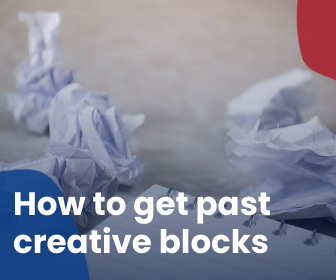
Whether or not you think of yourself as creative person, all jobs required creative thinking. And especially as marketers we produce a lot of content, for ourselves and our clients. However, it can be difficult to continue to produce high-quality content when we don’t feel creative or inspired.
Fortunately, there are things we can do to get over (or prevent) creative blocks.
Take a break
Remember your brain is a muscle and needs rest time. During our break time out brains continue to process ideas. Therefore, breaks can boost our creativity and give us new ideas.
One of the most effective ways to get over a creative break is to take a break outside. The University of Michigan found that walking outside (preferably in nature) improved attention spans and memory performance over 20%! They found that walking outside, no matter the temperature, had the same mental effects as meditation.
Don’t force it
Our brains don’t have an endless well of content ideas. And we can’t force ourselves to be creative. It’s okay to just walk away. One way to keep to refilling the well is to just do something else. Change your scenery, have conversations, read books or articles, watch a movie or show. Diversity of other creative inputs will refill your own creativity.
Inspiration can be found anywhere but it’s easier to find it when you are being active. Take opportunities to use other parts of your brain and senses! It could even be a monotonous task that you normally don’t enjoy, but the switch up will help get the juices flowing.
Focus on the process, not on the results.
Making content isn’t just about the result. There are many steps along the way. Finding joy in all the steps can make it easier to stay motivated.
Befriend your inner critic
There will be bumps in the road. It impossible to make perfect content, the first time, every time. Taking risks will help sharpen your skills and build your confidence. Don’t afraid to befriend your inner critic. Not letting yourself fail or telling yourself that you aren’t able to succeed both result in failure. It ok! Your inner critic and any failure is how you learn and grow. The fast you acknowledge your critic and failure, the faster you’ll be able to get past the block and make something you are proud of. It’s all part of the process!
“It’s through mistakes that you actually can grow. You have to get bad in order to get good.”
Paula Scher
Listen to yourself
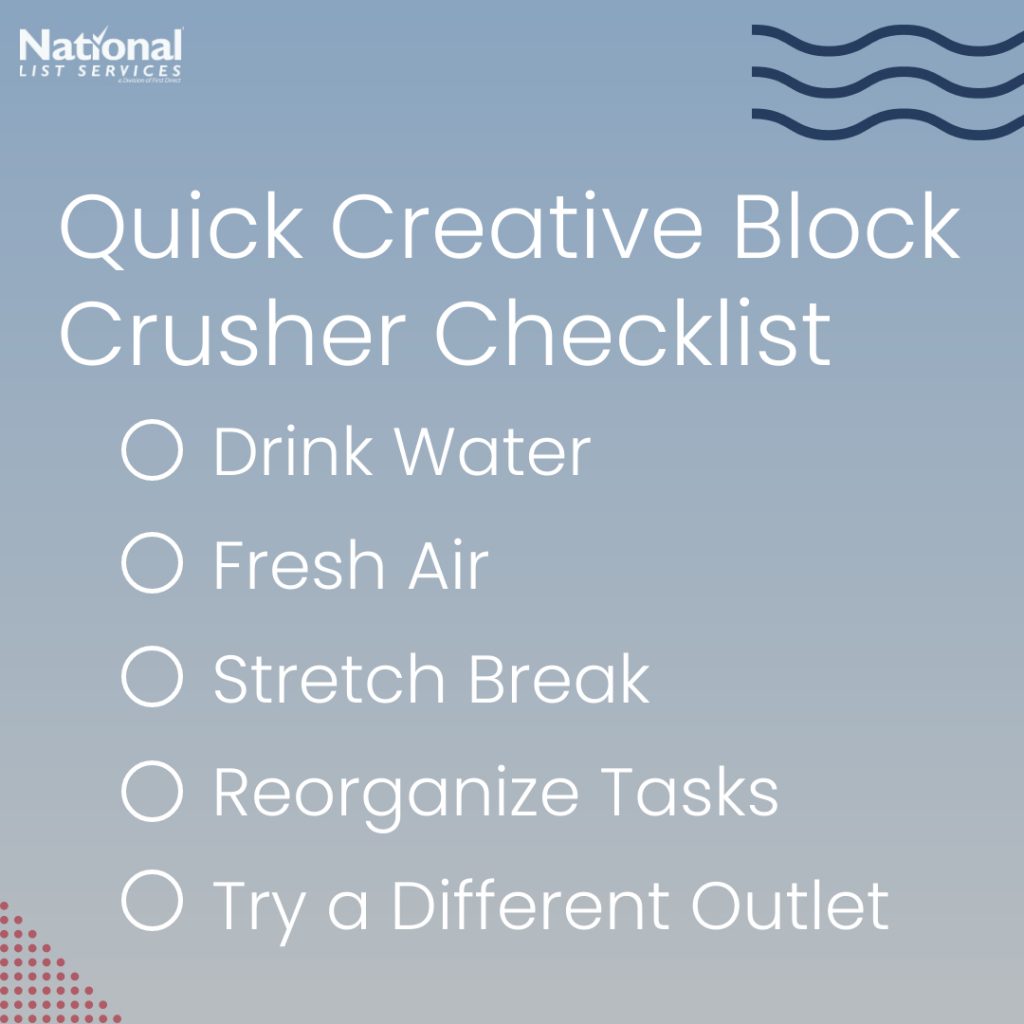
Although it may feel like it, creative blocks don’t just appear out of nowhere. Often, a lack of creativity comes from not taking care of your physical or mental health. It’s difficult to feel motivated and inspired if you’re exhausted.
So, check in on yourself. Are you getting enough sleep? When was the last time you drank water? It’s easy to want to power through and get things done but that mentality will come back to bite you later.
Audit your task list
Sometimes a task can seem so big and overwhelming that it’s hard to know where to start and we just don’t. It can paralyze your creativity. The easiest solution is to organize and prioritize your tasks. Cut the task into smaller chunks if you need to.
Ways to divide tasks
There are many different methods to prioritizing and organizing your daily tasks. The “Eat the Frog” method (named after the famous Mark Twain quote) encourages you to take care of the big or complex tasks first thing in the morning. This way you are productive right out the gate and don’t have a big task hanging over your head all day. Once you’ve eaten the frog you can move to other things.
Another popular method is David Allen’s “Getting Things Done” method. The first step in this method is write everything you need to get done down. Once you have an overview it’s easy to see what tasks are important. Writing it all down and putting it one place frees up brain power and lets you focus on getting the stuff done.
“Great things are not done by impulse, but by a series of small things brought together.”
Van Gogh
Plan ahead
Writing down your targets for the next day before you finish for the night or as you think of it, helps you feel on top of the day as soon as it starts. Spending a few minutes to plan out tomorrow’s tasks is way easier than spending the first part of your day scrambling to remember what was a priority to get done that day. This will also help your work life balance because you don’t have to keep thinking about all you have tomorrow.
Another aspect of auditing task is looking at how you view the task. Are you procrastinating the task because you don’t really want to do it? It’s easy to add time to situations if want to avoid the task. However, tasks don’t usually take care of themselves. (wouldn’t that be nice?) procrastinating the task will just make it worse. And often, when we finally do something, we’ve been procrastinating, we find it wasn’t that difficult in the first place!
What is your go-to way to get past creative blocks?
Is the current office model outdated?
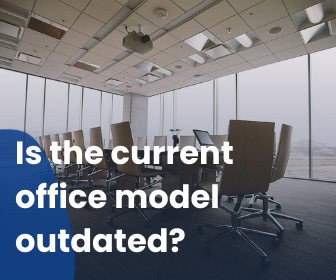
Remember like, a year ago when lots of big businesses were saying they weren’t going to require their employees to go back to the office? And then, inevitability they did. A lot of big companies and whole industries (like, banking and wall street,) have gone back to the office. What did we learn from corporate’s ‘year-at-home’? Are industries and office culture really going to adapt to modern WFH life? Or is the 9-5, 5-day-workweek here to stay?
Advantages of WFH
At the start of the pandemic, many companies feared that working remotely would cut done on productivity. After a year, that has proven not to be the case. Many employees feel more productive working remotely. 82% of senior executives surveyed reported seeing productivity levels either stay the same or increase because of working from home. WFH has cut down on something surprising: innovation.
82% of senior executives surveyed reported seeing productivity levels either stay the same or increase because of working from home.
WFH lowers office costs and shortens commutes. Employees like the freedom. 69% of respondents to Microsoft’s WFH survey said that the main reasons liked working remotely were: dressing more casually, being able to personalize their workspace, and having their pet by their side. Working from home also cuts down on casual workplace interruptions. That same Microsoft study found that before WFH, workers felt like 52% of their workday was wasted due to unnecessary disturbances. That number has fallen to 41% since the beginning of the pandemic.
Michael Parke, a professor at the University of Pennsylvania, who worked on the Microsoft study, said: “It seems that employees are able to hunker down and get less distracted while working remotely… However, the cost seems to be a loss of sense of purpose, which at work, is largely driven through strong and cohesive relationships and seeing how your tasks have impact on others.”
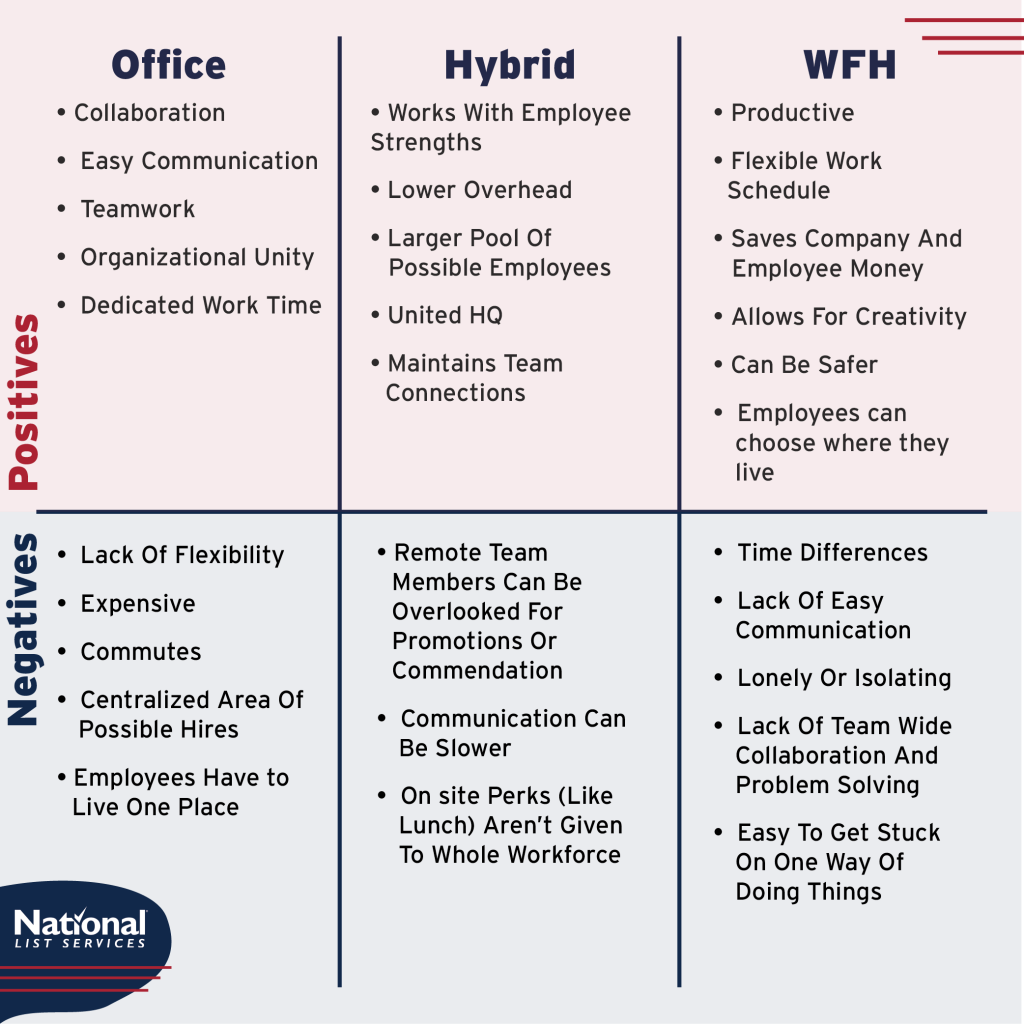
“However, the cost seems to be a loss of sense of purpose, which at work, is largely driven through strong and cohesive relationships and seeing how your tasks have impact on others.”
Michael Parke
Disadvantages of WFH
Working remotely means it’s hard to connect with coworkers, both for formal communication as well as for personal connections. This has had a direct impact on companies’ ability to innovate. The Microsoft study reported that the percentage of leaders who felt that their companies were innovative dropped 16% in 2020. Without sharing a physical space brainstorming and collaboration is more difficult. It’s harder to come up with new ideas as well as enact them.
The overnight and “temporary” switch to working remotely has created many challenges for employers and employees alike. WFH on this scale is such a new thing that solutions to challenges and long-term repercussions are still very much unknown. Being aware of challenges as they come up is the only way for companies to work on effective solutions.
What About A Hybrid Office?
As companies transition back to the office, many bigger companies aren’t seeing it as all or nothing: office vs. WFH. Many companies are trying a hybrid workplace. For example, the London based bank, StandardCharter is pushing and incentivizing a hybrid office model across its global offices. They plan to create smaller office hubs and give employees the choice to work at the office or at home. They are suggesting that employees meet at the office regularly to check in and collaborate. Building We-Work style office spaces will help solve technology deficiencies in their branches in developing countries and will lower costs across the board.
Facebook is also moving to a more hybrid work model. However, they are allowing it more than promoting it. Their current policy is that any full-time employee can request to WFH. Some jobs such as data center maintenance and hardware development will not be allowed to work remotely. They are also planning to adjust salary based on where you decide to work. It is a lot cheaper for the employee to work remotely from a city in the Midwest. (For example, the cost of living in San Francisco, CA is 199.8% higher than it is here in Omaha, NE.) Facebook is going to open all their US offices up to 50% capacity in the fall. Meaning, that almost 30,000 employees will continue to work remotely.
How has the last year of WFH impacted entrepreneurs?
Many people took the opportunity of disrupted work to start new businesses. Many people liked the freedom and flexibility that working from home offered and decided to leave their corporate jobs and pursue entrepreneurship.
“Americans submitted an average of 111,000 applications for new businesses per week between the end of June 2020 and the beginning of September 2020, the most applications submitted per week since 2007.”
U.S. Census Bureau
How do many people feel about going back to the office?
A lot of banks and tech companies went back to the office last week. How do their employees feel about it after working from home for a year and a half? Of the over 1,200 employees and 133 executives surveyed at the end of last year, 55% said they would prefer to still work remotely at least 3 days a week. Along with the loss of flexibility and other perks WFH offers, going back to working surrounded by people can be daunting. A scary as it may be, it will show your employer and teammates your commitment to your job and flexibility in dealing with transitions. Which will be really appreciated! If you are feeling anxious about the return, talk to your boss. Your company may be more open to a hybrid office than you think.
There is never going to be a complete consensus to the question: is WFH better? Every business, every office, and every employee will have a different opinion and method that works best for them. It doesn’t really matter what your company decides to do, as long as it’s the right fit for you.
Do you think a hybrid office is effective?
7 Ways To Make More Engaging Content
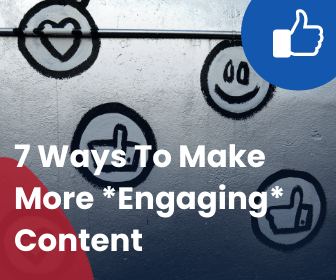
Content creation is an integral part of marketing or running a business in general now. However, a lot of companies struggle with creating content that generates engagement. Part of the value of content creation is that engagement and the conversation between brand and consumer. What can you do to create engaging content for your brand?
Here’s 7 things we have found to be essential in making quality content!
Know Your Audience
The content you create for one audience can be very different from another. Understanding the WHO is helpful first step.
It can also be helpful if you think of your audience as a single composite person. Instead of trying to talk to all of them, you are instead making content for one person. A lot of companies do this by making a buyer persona. That way you can think, “Would my buyer persona like this?” vs. “Would all my followers enjoy this content?”
Make a Plan
There is nothing more overwhelming than trying to maintain consistent content posting across multiple channels without a plan. It can feel like juggling snakes. 🐍 Making a plan can be as simple as figuring out what types of content you want to post and when it would be best to time to post it. The more specific your plan is the more you time you take out of the equation.
Part of making a plan is planning out your message and/or your angle. Now that you know who your audience is, think about what type of content would work best for them. Knowing what you want to talk about can make it easier to figure out what types of content would be best. Would your audience benefit from long form blog articles or would a TikTok series be more helpful? Both of those types of content take a lot of effort, so planning it out ahead of time is valuable!
Find Shared Passions
The sheer amount of product, companies, and information available is staggering. It is not enough anymore to have a good product available anymore, your brand ideals and personality need to match with the personality of your consumers. 56% of Gen Z consumers say that having shared passions and perspectives is a major factor when it comes to their engagement with a brand. However, most consumers are fantastic at sniffing out inauthenticity. Your brand personality and ideals need to actually be what you say they are. Actions speak louder than words!
What are the advantages of having a well-defined brand personality and ideals? Giving your company a personality makes things like content creation a lot easier. Knowing who you are also can help you make decisions about the direction you want to go in the future.
And 49% of young consumers say they will evangelize a brand they feel represents their values, likes, and personality.
Don’t be afraid of incorporating causes you care about into your brands personality! 72% of consumers want the brands they care about to be positive contributors to society. We’ve seen in recent years that many brands (especially smaller companies) connect their core brand to a charity or cause they care about. Younger consumers are 69% more likely to buy from a brand that contributes to a cause.
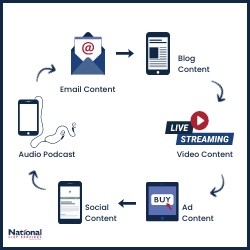
Keep It Simple
Don’t make it harder than it needs to be. No matter who your audience is, needlessly complicated language or content structure isn’t appreciated. Simple and honest is always good. Remember, why you are making the content. Is it to promote you or your brand? Then tone of the content should match your voice. People can see right through any inauthenticity if you are trying to make something that isn’t you.
It’s easier to connect with a brand online if you feel like you are talking to a real person. Does the content you are making sound personal?
Remember the Big Picture
Why do you want to make this content? Keep the big picture of your content in mind as well as each individual piece. Are you trying to promote a specific product or service? Don’t be afraid to include a call to action in your content! A call to action is how to accomplish the goal of your content. It’s the follow through.
A good call to action is simple and concise. It uses strong verbiage. Give your audience a good reason to take the desired action. Don’t be afraid to get creative!
Take a Step Back
When it comes to content, it’s often valuable to take a step back and from your project and let it rest for a bit. The longer you work on a piece of content the easier it is to be become blind to mistakes, errors, and typos. You may be surprised by the power of fresh eyes!
An old copy writer trick is to proofread backwards. Instead of starting at the beginning of your content: start at the end. Because your brain is following a different path through the information, it sees things in a different way. Starting at the end allows you to look at it sentence by sentence instead of word by word or thought by thought. Knowing your content is edited well will help you feel more confident in posting it.
Another aspect of taking a step back from your content is revisiting old content. Repurposing or adapting finished content is an excellent way to stay inspired and make more content. There are always new things that can be added. Adding information keeps your messages up to date. Up-to-date content is more accurate and provides for value to your followers. Another reason to recycle content is that it gives more people an opportunity to see it. And even if someone has been following you for a long time there’s a good chance that they didn’t see the content the first time around.

Keep Consuming Content
This is my favorite part. 😜 One of the best ways to keep your own content sharp is to consume other content. It can inspire you, help you stay up to date with current trends, and keep your skill sharp. Most ideas don’t start in our heads, the spark is external. All of the creative juices it takes to create content can easily be burnt out if you don’t feed it with creative thing that you care about. Change your scenery, have conversations, read books or articles, watch a movie or show. Diversity of other creative inputs will refill your own creativity!
What type of Content have you found to be the most engaging with your audience?
5 Ways to Help Emails Reach People
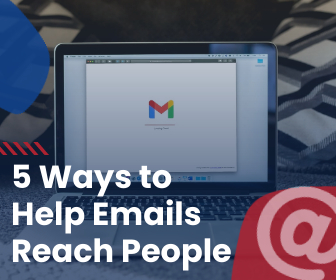
There are so many things that impact an email’s effectiveness. Often, what matters to the consumer and what matters to the email service are very different things. It’s important to strike the right balance in making the consumer and email service happy, as well as reaching your goal in sending the email. So, how can you make sure your emails reach people?
The Email Services
What do email services care about? They care about the backend/behind the scenes stuff. Things like how heavy images are and the amount of content and the types of links. This is where general best email practices come into play.
It’s important to give consumers an opportunity to opt in (and out if they want) of your email campaigns. If you don’t give people a way to opt out, you are breaking federal email laws and get blacklisted or penalized. Give people the option of choosing what types and how much email content they want from you. Follow through on their requests promptly. Legally, you are required to honor their request within 10 business days. Honoring that request promptly will build on their opinion of your brand.
What other email practices are required by law? Don’t use misleading or inaccurate header information such as your “To,” “From,” and “Reply-To” information. You want people to know where the email is coming from and so does the email service provider. Consumers don’t want to get an email from someone they don’t trust, and the email service provider doesn’t want to deliver email like that.
Don’t mislabel the email. The CAN-SPAM act requires that email subject lines accurate reflect the content of the email. That includes ad information. Like most social medias, email is required to tell the consumer if it an #ad. However, there is a lot of leeway on this and how you choose to disclose this information is up to you.
Consumer’s Opinions
Now that you have followed all the email laws and best practices to get your email in your consumer’s mailbox, what else should you do? Well, consumers care about catchy subject lines, engaging and interactive content. Here’s 4 things that will impact your emails effectiveness from the consumer’s point of view:
Choice of Words
Email marketing provides freedom for trying out different types of copy until you find works best for your audience. Every audience is different so what content will be the most effective is also different. It is important to understand your demographics and who your audience is.
Personalized Content
Email is more than just delivered information. It’s a conversation between brand and consumer. Often it a brand’s only way to communicate with customers and can feel very one on one. The consumer feels like they know the brand like a person, so it makes sense if the brand communicates with the consumer as if the know them as well. They are simple things that make that conversation more memorable, for example, many brands use the customer’s name in emails.
Beyond that you can use audience segmentation to separate your audience into groups that share common characteristics like demographics and behavioral information. Using your audience segments to target your message to things that each group are actually invested in can greatly increase how personal your marketing will feel to the customer.
Brand Consistency
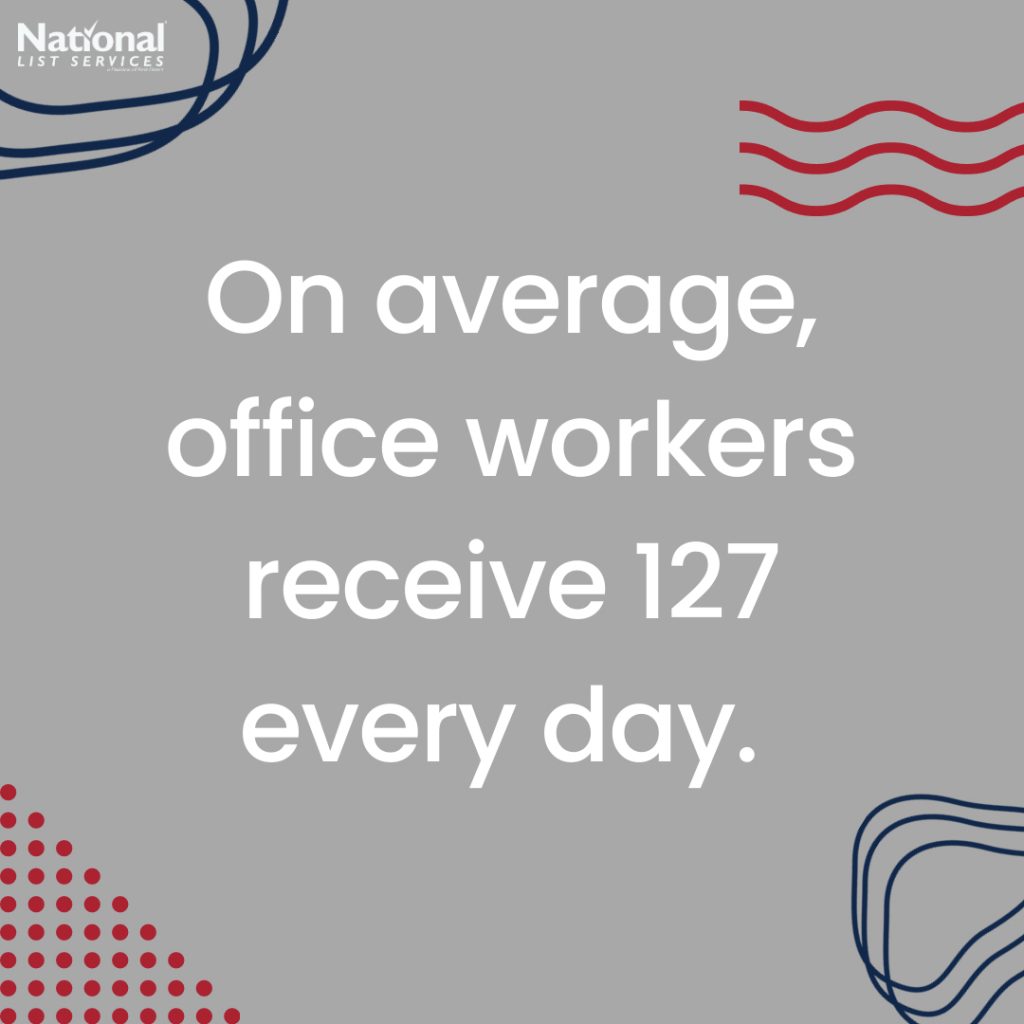
Since email is often one of main touch points brands have with consumers, it’s really important to maintain brand consistency. The consumer needs to know that the message is from you. Keeping that brand consistency helps your brand’s personality shine and helps people get to know you. Brand consistency builds loyalty and trust. It helps the consumer maintain the connection to your brand.
What brand elements should you include in your emails? Your logo, brand colors, and fonts are good places to start. Due to the nature of email, you don’t want to over crowd it with branding. Instead, think about how tone and feeling. Does the way this email is set up feel like how my brand feels?
Don’t waste people’s time
Most office workers receive 127 every day. People don’t have time to read lengthy emails that actually provide them value. Email copy writing is about providing value as succinctly and quickly as possible. Be direct and to the point. Don’t word vomit on people. Use infographics, bullet points, and short paragraph too highlight the point of your message.
What makes you open an email?
Need a Refocus Break?
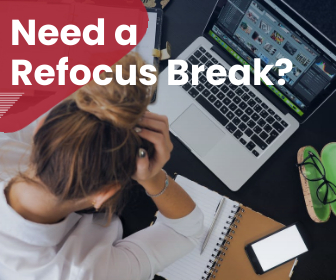
In this digital world, a lot of us probably spend more time at our desks than we’d like to. Long amounts of time staring at a computer can take a toll! Here’s a few things you can do to give you a physical and mental break.
Take a Stretch Break
Admit it, you’re sitting hunched over your keyboard or phone right now. 😜 Its ok; we all do it. Here’s 3 quick stretches you can do at your desk!

#1 Give Your Wrists Some Love
Being on the computer all day overuses some muscles and underuses others. New York City based physical therapist, Dr. Abby Bales, suggests stretching your wrist flexors and extenders. The easiest way to do this is to hold your arm straight out and bend your wrist up and down at 90 degree angles. Bales says this “prevents the wrist from getting locked in a smaller range.”

#2 De-Hunch
Your upper back and shoulders can lock from being at a desk too long. Dr. Bales suggests stretching by clasping your hands behind your head and squeezing your shoulder blades. This opens up your chest and shoulders, helping stop the hunch.
#3 Big Shrugs
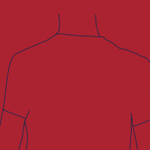
While on the computer most of us have the habit of scrunching up our shoulders and leaning toward the screen. Doing some 3-5 second shoulders shrugs helps! “By actively shrugging and then letting go, the brain is made aware of the unhealthy height of the shoulders,” Dr. Bales said, and it resets accordingly.
Mental Resets
Anytime you disrupt your routine (either by doing little things like pausing to stretch or like, I don’t know, a global pandemic) you have opportunity to reset. What can you do to reset your brain?
#1 Breathe
Pausing and taking a couple deep breathes can help clear your mind, relax, and refocus. It’s as simple as just looking up from your computer or phone and focusing on your breathing for a bit.
#2 Reprioritize
Another thing you can do to mental reset is take a moment to go over your tasks and reprioritize. Ask yourself, “What is my overall goal for the day and what do I need to do next to reach that goal?” It’s critical to understand what tasks are most important. Inevitably things change throughout the day; deadlines move and priorities shift. Reorganizing your task list can help you to stay focused on what really matters and make it easier to adapt to shifting priorities.
#3 Change Up Your Surroundings
Changing something about your surroundings can help you refocus. Can you get up and move? Now that it’s summer, could you work outside? Disrupting your groove gives you the opportunity to reset your focus. Changing where you physically are or even something small like switching up your music is super effective!
What ways have you found to reset your focus and give yourself a physical or mental break?
Scared of Content Creation? Here’s 6 tips

Content creation is an integral part of marketing or running a business in general now. Even if you don’t think that you are a quote-on-quote content creator, you probably do create content. Every time you post on Facebook or update Instagram, that’s content. What are some easy things you can do to up your content game?
Here’s 6 things we have found to be essential in making quality content!
Know Your Audience
The content you create for one audience can be very different from another. Understanding the WHO is helpful first step.
It can also be helpful if you think of your audience as a single composite person. Instead of trying to talk to all of them, you are instead making content for one person. A lot of companies do this by making a buyer persona. That way you can think, “Would my buyer persona like this?” vs. “Would all my followers enjoy this content?”
Make a Plan
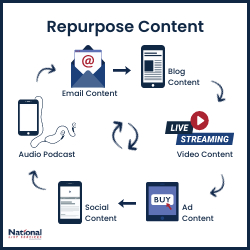
There is nothing more overwhelming than trying to maintain consistent content posting across multiple channels without a plan. It can feel like juggling snakes. 🐍 Making a plan can be as simple as figuring out what types of content you want to post and when it would be best to time to post it. The more specific your plan is the more you time you take out of the equation.
Part of making a plan is planning out your message and/or your angle. Now that you know who your audience is, think about what type of content would work best for them. Knowing what you want to talk about can make it easier to figure out what types of content would be best. Would your audience benefit from long form blog articles or would a TikTok series be more helpful? Both of those types of content take a lot of effort, so planning it out ahead of time is valuable!
Keep It Simple and Honest
Don’t make it harder than it needs to be. No matter who your audience is, needlessly complicated language or content structure isn’t appreciated. Simple and honest is always good. Remember, why you are making the content. Is it to promote you or your brand? Then tone of the content should match your voice. People can see right through any inauthenticity if you are trying to make something that isn’t you.
It’s easier to connect with a brand online if you feel like you are talking to a real person. Does the content you are making sound personal?
What is the Purpose of Your Content?
Why do you want to make this content? Keep the big picture of your content in mind as well as each individual piece. Are you trying to promote a specific product or service? Don’t be afraid to include a call to action in your content! A call to action is how to accomplish the goal of your content. It’s the follow through.
A good call to action is simple and concise. It uses strong verbiage. Give your audience a good reason to take the desired action. Don’t be afraid to get creative!
Take a Step Back
When it comes to content, it’s often valuable to take a step back and from your project and let it rest for a bit. The longer you work on a piece of content the easier it is to be become blind to mistakes, errors, and typos. You may be surprised by the power of fresh eyes!
An old copy writer trick is to proofread backwards. Instead of starting at the beginning of your content: start at the end. Because your brain is following a different path through the information, it sees things in a different way. Starting at the end allows you to look at it sentence by sentence instead of word by word or thought by thought. Knowing your content is edited well will help you feel more confident in posting it.
Another aspect of taking a step back from your content is revisiting old content. Repurposing or adapting finished content is an excellent way to stay inspired and make more content. There are always new things that can be added. Adding information keeps your messages up to date. Up-to-date content is more accurate and provides for value to your followers. Another reason to recycle content is that it gives more people an opportunity to see it. And even if someone has been following you for a long time there’s a good chance that they didn’t see the content the first time around.

Keep Consuming Content
This is my favorite part. 😜 One of the best ways to keep your own content sharp is to consume other content. It can inspire you, help you stay up to date with current trends, and keep your skill sharp. Most ideas don’t start in our heads, the spark is external. All of the creative juices it takes to create content can easily be burnt out if you don’t feed it with creative thing that you care about. Change your scenery, have conversations, read books or articles, watch a movie or show. Diversity of other creative inputs will refill your own creativity!
What’s your favorite type of content to create? How do you stay motivated in content creation?
All The Reasons You Need A Buyer Persona

A Buyer Persona or Avatars is one of those confusing marketing things that seems to be really important, but no one ever explains why or how you can make one. Buyer Personas are especially valuable in this digital age where you can’t see your customers. They can help make your digital presence and marketing more personal.
It’s a lot easier to market to one single person than to a crowd. We’ve talked in the past about social media (and email) feels like a personal one-on-one conversation between brand and consumer. Building a buyer persona connects with that thinking. Having a buyer persona helps you to hon in on who you are reaching and who you want to reach.
What are Buyer Personas or Avatars?
In the simplest terms, a buyer persona is exemplification of all of your customers. The most common way to do this is to create a fictional person that has the most common demographics and interests of your customers. What are your customers common denominators? What do they want? What are their pain points? Taking this information and combining it into a person you can picture makes it easier to connect with the crowd. A lot of marketers recommend giving your buyer personas names.
Jim Edwards from Funnel Scripts explains buyer personas as the main character in the story of your company’s customer journey. Although your company already has its own personality, (or brand) in order to success the narrative you’re telling haws to focus on what the customer wants and needs. You are there to help them get to where they want to go. Jim Edwards example buyer persona was for a weight loss company. Their buyer persona is a middle-aged unicorn named Fred who needs to lose weight if he wants to be successful at his quests. Fred is the main character in the story. The weight-loss company is there to help him.
What information do you need to create a buyer persona?
Like any good main character, your buyer persona needs to be well rounded. It needs to have a purpose, interests, goals, and struggles. It’s especially important to know what motivates them so you can help them.
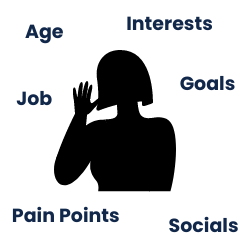
Here’s some common buyer persona attributes.
- What are their basic demographics?
What gender to they identify as? How old are they? Where do they live? What is their relationship status? Are they educated? - What do they do for work?
What’s their job title and description? But more than that, are they a decision maker? What do they influence at work? - What are their interests?
Do they have hobbies or interests? What do they do in their free time? Are they part of a community? - What do they want and why can’t they have?
This a big thing for figuring out what you can do to help them! What are their goals and dreams? What are their pain points? Like, what keeps them up at night? - Why wouldn’t they buy from you?
What’s stopping them from buying from you? What objections may they have? - What ways would they prefer to interact with you?
Do they use social media? Do like a particular social media? Is a phone call the best way to reach them?
Once you have that all that information, you will have a very clear image of who your customer is!
A lot of companies create multiple buyer personas. It is a very good way to segment out different sections of your business. It is also helpful to create a buyer persona for your ideal customer as well! You can take the information you’ve learned about your ideal customer and use it to go and get those customers.
Do you have a buyer persona for your business? And more importantly: what did you name them? 😜
What You Need To Know About SaaS

SaaS stands for software as a service and is sometimes known as “cloud-based software.” In the past few years, the Saas industry has exploded and has become the default type of software for most business technology. SaaS is differentiated from other cloud-based technology because it’s focus in entirely on products for business.
What’s the advantage of using SaaS?
What’s the advantage of using SaaS? There are many! For one thing, since Saas is entirely web based there’s no set up or installation and the software is maintained by the vendors. This allows business owners to focus on using the tools instead of learning complicated systems or maintaining hardware.
Another advantage is that most SaaS systems are paid for with a subscription. This eliminates setup expenses and cuts down on long term costs. SaaS user interfaces are usually highly customizable making an easy user experience. These two things making SaaS ideal for small business because it allows them to have powerful, potentially expensive software that could have otherwise been unattainable.
The SaaS Business Plan
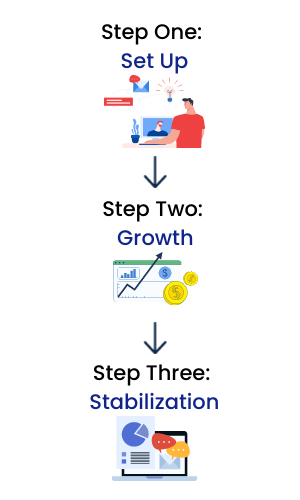
The SaaS business model is split into three parts. Part one is “Setup.” The setup phase is where is where you create the foundation for your business. Either by starting completely form scratch or integrating business data.
Step two is “Growth.” (which says a lot about the effectiveness of SaaS systems.) Once you have new customers, you’ll also have increased data about your customer base, and you can use that information to generate more customers. More customers also means more revenue that you can reinvest into your business.
Step three is “Stabilization.” In this phase you’ve created enough infrastructure that the systems you have in place can keep up with customer increases and you can refocus to other aspects of your business.
What are some examples of SaaS services?
Theres countless SaaS companies but some of the big SaaS companies include Google, HubSpot, MailChimp, Slack, SurveyMonkey, and Spotify. Adobe and Microsoft also have SaaS services available.
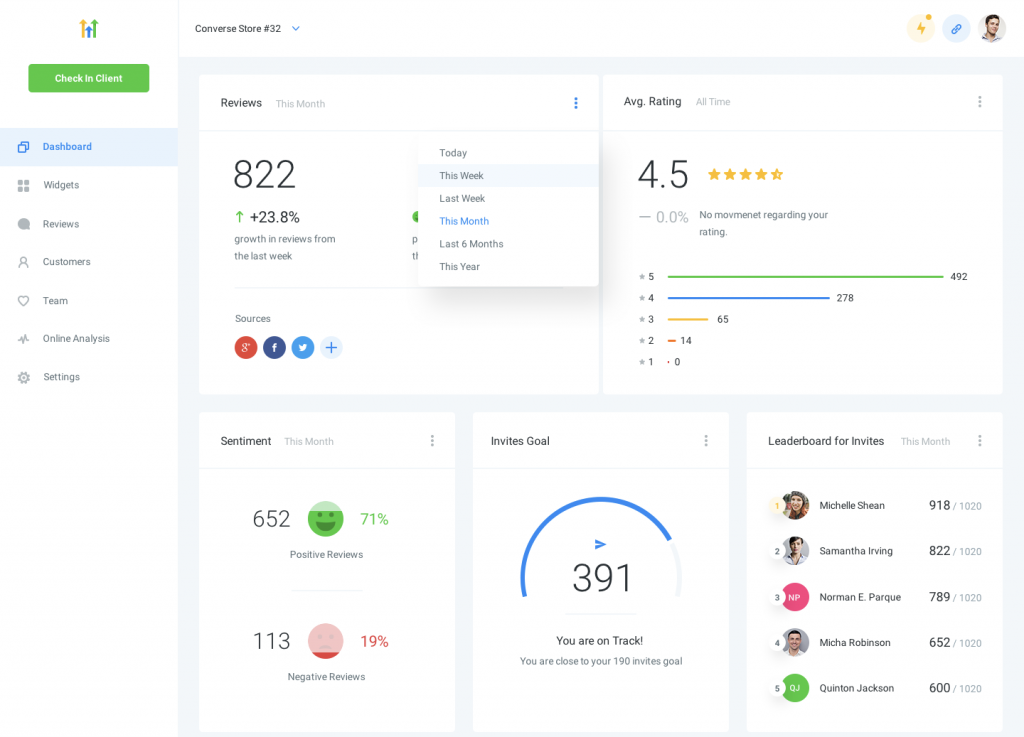
Here’s some SaaS companies we use every day:
- Twilio
- High Level
- LastPass
- Click Funnels.
What do you think the essential SaaS companies are?
Learn More about SaaS and business growth from High Level founder, Shaun Clark here.
Data & The Instagram Algorithm
The Instagram algorithm is the bane of some people’s existence. And yes, it is confusing since they moved from a chronological feed. It’s important to know how to best leverage the Instagram algorithm to make sure your content is being seen!

According to Instagram, they decide to show your content based on 6 factors:
#1: Interest
#2: Relationship
#3: Timeliness
#4: Frequency
#5: Following
#6: Usage
The first three are somewhat self-explanatory. Instagram shows you things based on what you’ve liked in the past. They highlight posts from people they’ve decided are close to you: people whose content you most engage with, the people who tag you, the people you DM etc. Instagram also cares about when you post. Keeping track of your analytics can give you a good idea about when the best times to post for you are.
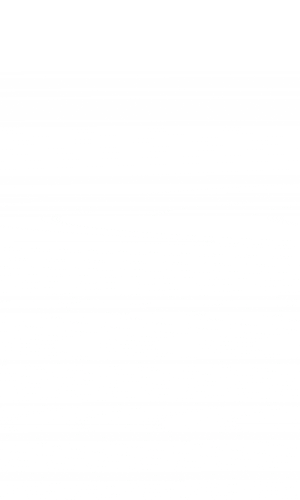
#4 Frequency isn’t about how often you post but instead about how often interact with the app. The more often you check your Instagram feed the more likely your feed will be chronological because they are always trying to show you the newest content available. This is helpful to understand what type of Instagram users your followers are. If they don’t check the app that often, then it will be harder to have your posts seen. Building up the other 5 components to the algorithm will be all the more important.
#5 Following
Instagram assigns value to follower counts in a couple different ways. First, is simple: the more followers you have the more likely your posts will be highlighted in your follower’s feeds. However, they also look at your follower’s engagement levels. If you have a lot of ghost followers that don’t interact with you, then they could actually be hurting you. Another thing to consider, the more people your followers follow the more competition for space in their feed. Do your followers follow a lot of people? Understanding that can help you decide if you need to adjust where you focus your efforts.
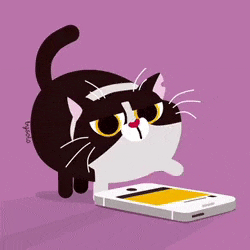
#6 Usage
This is how Instagram qualifies the amount of time spent on the app. The more time spent on the app, the deeper into its catalogs they have to pull from to show content. You can use this to your advantage by using hashtags or developing content that matches with the interests of Instagram’s heavy users.
What ways do you try to leverage the Instagram algorithm to work for you?
